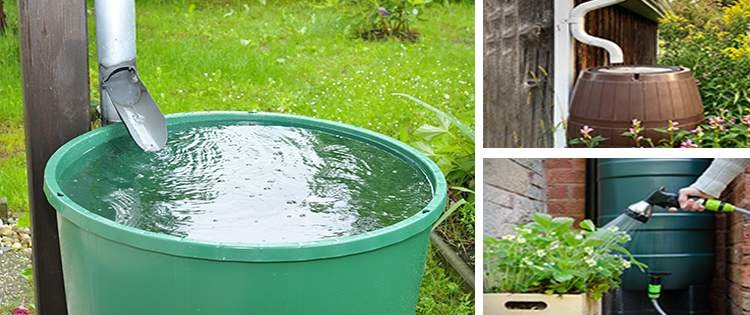If you enjoy the flavor of fresh, juicy tomatoes, there is no better way to enjoy them than by growing them yourself in your own backyard vegetable garden. Growing tomatoes, however, sometimes may be challenging, as any seasoned gardener will tell you, especially if you’re new to gardening. Thankfully, with the correct information and techniques, you can create a plentiful harvest of delectable tomatoes that will have you and your family coming back for more.
In this guide, we’ll cover everything from choosing the proper kind and preparing your soil to watering and feeding your plants in your garden. Whether you’re a novice or a seasoned gardener, these pointers will help you cultivate the tastiest, freshest tomatoes you’ve ever had.
A Brief History
Tomatoes have a long history of cultivation, with evidence of their use dating back to the Aztecs over 700 years ago. The Spanish were the first to bring tomatoes to Europe in the 16th century, and it was not until the 18th century that they were widely grown and used in cooking. Tomatoes are now a key ingredient in many dishes in countries all over the world.
Tomatoes are native to South America and Central America, where they were grown by indigenous cultures for centuries. They have since spread around the world, and today are cultivated on six continents. In the United States, tomatoes are now one of the most popular vegetables grown in both home and commercial gardens.
Tomatoes come in many shapes, sizes, colors, and flavors; they can range from small cherry tomatoes to large beefsteak tomatoes. There are also numerous varieties available, including heirloom varieties that have been passed down through generations. The most popular tomato varieties include Roma, Beefsteak, Cherry, Heirloom, and Brandywine.
Tomatoes can be eaten raw or cooked into sauces or soups. They can also be canned or frozen for future use. Tomatoes are rich in vitamins A and C, as well as fiber and other nutrients. They are also low in calories and fat-free, making them a nutritious addition to any diet.
Nutritional Benefits
Tomatoes are one of the world’s most popular fruits, and with good reason. They are not only tasty, but also high in nutrients that can improve your health in a variety of ways.
Tomatoes are high in vitamin C, which is necessary for a healthy immune system. Vitamin C is an antioxidant that protects your cells from free radical damage, which can lead to the development of chronic illnesses such as cancer and heart disease. Consuming tomatoes on a daily basis can help strengthen your immune system and prevent you from a number of health concerns.
Tomatoes, in addition to vitamin C, are high in vitamin A, which is essential for keeping good vision and skin. Vitamin A is an antioxidant that can help protect your eyes from UV radiation and other environmental causes. It also helps to promote healthy skin and prevent skin damage, lowering the risk of premature ageing and skin cancer.
Tomatoes are also high in fibre, which is important for maintaining healthy digestion and avoiding constipation. Fiber is a form of carbohydrate that the body cannot digest, and it aids in the passage of waste through the digestive system and the promotion of regular bowel movements. A fiber-rich diet can help lower the risk of a variety of health problems, including heart disease, diabetes, and some kinds of cancer.
Other key elements found in tomatoes include potassium, folate, and vitamin K. Potassium is necessary for normal blood pressure and heart function, whereas folate is required for good cell growth and development. Vitamin K aids in blood clotting and bone health, and it is also necessary for proper brain function. Tomatoes are a wonderful choice for anybody wishing to enhance their diet and enjoy a variety of health advantages since all of these nutrients work together to promote overall health and wellness.
Tomatoes also contain lycopene, a powerful antioxidant that can help protect against certain types of cancer. Eating tomatoes regularly can also help reduce the risk of heart disease, diabetes and obesity. In addition to the nutritional benefits of eating tomatoes, they are also incredibly versatile when it comes to cooking.
Tomatoes can be used in a variety of dishes, from salads to sauces to soups. They are also a great addition to any sandwich or burger. With so many ways to enjoy tomatoes, it’s easy to incorporate them into your diet on a regular basis.
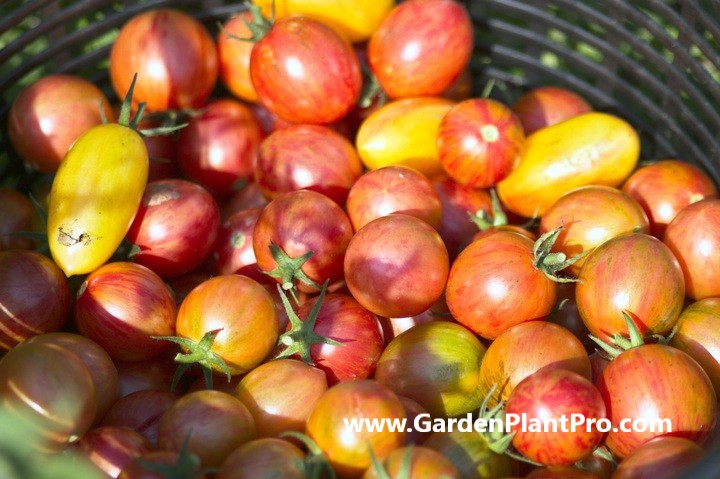
Common Varieties & Their Uses
When it comes to tomato varieties, there is no shortage of options.
Each variety has its own distinctive flavor, texture, and use. Whether you’re looking for a sauce tomato, a slicing tomato, or a cherry tomato for salads, there are plenty of choices.
The iconic beefsteak tomato, famed for its huge size, meaty texture, and sweet flavour, comes first on the list. Beefsteak tomatoes are ideal for slicing and tossing into sandwiches, burgers, and salads, as well as grilling or roasting.
The cherry tomato, which is petite, sweet, and juicy, is another popular variation. Cherry tomatoes are ideal for snacking, salads, and grilling with other veggies. They’re also a tasty complement to spaghetti and pizza.
The Roma tomato is another popular type that is frequently used in sauces and canning. Roma tomatoes have an oblong shape and a solid, meaty texture, making them excellent for boiling down into a rich, delicious sauce.
There are innumerable types of heirloom tomatoes to pick from, each with its own distinct flavour and look. Brandywine, Cherokee Purple, and Green Zebra are among popular heirloom varieties. These tomatoes are highly valued for their distinct hues and flavour profiles, and they are ideal for use in salads, salsas, and other fresh foods.
Lastly, there are specialist tomato types developed for specific purposes, such as the San Marzano tomato, a sort of plum tomato commonly used to make authentic Italian tomato sauce. Other specialized kinds include the small and delicious yellow pear tomato and the green tomato, which is frequently used to make fried green tomatoes.
DIY PROJECT: Collect rainwater no matter where you live...
This DIY project is the best way to legally collect rainwater NO MATTER where you live. Get chlorine-free water, cut down on your water bills, and have enough for an emergency situation or to water your garden. Read More Here...
When selecting your tomato variety, it’s important to keep in mind the growing season of each variety. Some varieties are better suited to warmer climates while others do better in cooler areas. Additionally, some varieties may require staking or trellising for support while others grow well without any additional support structure.
Once you have chosen the right variety for your needs, it’s time to start planting!
When To Sow
When it comes to sowing tomato seeds, timing is everything.
Ideally, you should sow the seeds four to six weeks before the last expected frost in your area. In temperate climates, this is usually late winter early or spring. If you are growing your tomatoes in containers, you can start sowing indoors up to eight weeks before the last frost date.
When sowing seeds indoors, fill seedling trays or small pots with a seed-starting mix and moisten it lightly. Sow two or three seeds per cell and cover lightly with soil. Place the tray or pots in a warm spot that is away from direct sunlight and keep the soil moist.
The seeds will germinate within seven to 10 days. Once sprouts appear, thin out any weaker plants so that only the strongest one remains per pot or cell.
If you are growing your tomatoes outdoors, wait until all danger of frost has passed before planting out your seedlings. Plant them in a sunny location with well-drained soil that has been enriched with compost or well-rotted manure. Make sure to space them 40cm apart, ensuring that each seedling is planted at least 8 cm deep and watered thoroughly after planting.
Once your tomatoes have been planted, be sure to provide them with regular water, adequate sunlight, and an occasional nutrient boost in the form of liquid fertilizer or compost tea to ensure healthy growth and fruit production.
Choosing A Suitable Location In The Garden
When selecting a suitable location for your tomatoes in the garden, it’s important to consider several factors. Start by looking for a spot that gets at least six hours of sunlight per day. Tomatoes, like other vegetables, need adequate sunlight in order to thrive.
Also, look for a spot that is sheltered from strong winds or other elements that might damage the plants. Additionally, try to avoid planting your tomatoes in the same spot as last season or in the same spot as other large vegetables, as this can lead to disease issues and nutrient depletion.
Once you’ve identified the perfect position in your garden, make sure your soil is full of nutrients. Tomatoes need nutrient-rich soil in order to produce healthy fruit. Enriching your soil with compost or other organic material can help improve its structure and fertility.
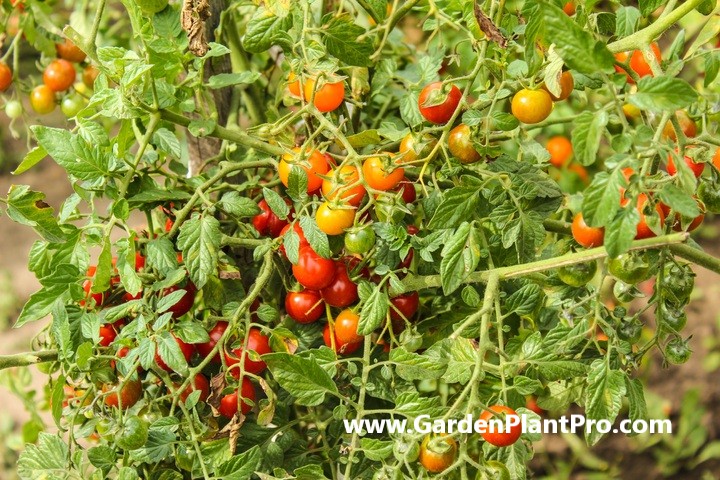
Preparing The Soil
To begin, select a sunny area for your tomato plants. Tomatoes thrive in direct sunshine, so choose a location that receives at least 6-8 hours of sunlight every day.
Before planting, test the soil to see what its pH is. Tomatoes thrive on soil with a pH of 6.0 to 7.0. To determine the pH level, utilise a soil testing kit. If the soil is overly acidic, lime can be used to raise the pH level, and sulphur can be added to reduce it.
Clear the planting area of any weeds, grass, or rubbish. This reduces competition for water and nutrients while also lowering the danger of pests and illness.
Compost, aged manure, or leaf mould can all be used to enrich the soil. This will enhance the structure, drainage, and fertility of the soil. You may incorporate organic materials into the soil with a garden fork or rototiller.
Before planting, amend the soil with a balanced granular fertiliser, such as 10-10-10, according to the package directions. This will supply the plants with the nutrients they require to develop strong and healthy.
Before planting, properly water the soil. This will aid in soil settlement and offer a moist habitat for the budding plants.
Do you have some charcoal in your house right now? We call charcoal a “miracle leftover” for anyone who wants to be a little more self-sufficient and cut costs. That’s because it can help you with so many different things around the house and garden. You can even use it to make an energy-free fridge. Read More Here...
Apply a layer of organic mulch to the soil, such as straw, hay, or leaves. This will aid in moisture retention, weed suppression, and temperature regulation in the soil.
You can create an optimum growth environment for your tomato plants by following these soil preparation measures. This will assist ensure a plentiful supply of tasty and nutritious tomatoes.
Planting The Seeds Or Seedlings
To plant tomato seeds or seedlings in your vegetable garden, first determine your average last frost date to know when to sow the seeds. It can take six to eight weeks from sowing your seeds to transplanting the seedlings outdoors.
When sowing your tomato seeds, use either potting soil or a soilless starting mix. Make sure to keep them in a warm place and keep the soil damp until they germinate. Use seed-raising mix and sow the seeds about 5cm apart to allow for adequate space for growth.
Once your tomato seedlings have germinated, prepare the soil in the vegetable garden bed you have chosen for them beforehand. To do this, turn over the soil and incorporate organic matter such as compost or aged manure before planting. To give your tomato plants support and encourage healthy growth, you can build a trellis or frame out of bamboo poles or stakes and string.
When it comes time to transplant your seedlings into the garden, make sure that each one is planted at least 45cm apart and watered well after transplanting. Once established, tomatoes require regular watering and fertilizing to ensure optimal growth and development.
Caring For The Seedlings
Once the tomato seedlings have been planted, caring for them is essential to ensure a healthy crop of tomatoes. It is important to water the plants deeply two to three times a week and avoid getting the foliage wet. Tomato plants need to be staked, preferably prior to planting.
Water the newly transplanted tomato seedlings in the early morning so that they have sufficient moisture to make it through a hot day. Water generously the first few days after transplanting and then reduce watering frequency gradually to encourage root growth and development.
Select a location in full sun for tomato plants and prepare the soil with a tiller or shovel prior to planting. Add compost or manure to enrich the soil and use mulch around the base of the plants to control weeds and retain moisture.
Use stakes or cages around each plant for support and tie them in as they grow so that they don’t topple over due to weight of fruit. Regularly check for pests, diseases and other problems and treat appropriately if necessary.
Harvesting should be done when tomatoes are ripe, usually about 8-10 weeks after planting depending on variety, climate and environment. Store tomatoes in a cool place away from direct sunlight and enjoy your homegrown tomatoes.
Trellis & Support Options
When it comes to supporting your tomato plants, there are a variety of options available.
Cages are a great way to contain the plants and can be made from metal or plastic mesh, or even wooden panels. Install wooden or rebar stakes at least 6 feet tall at planting time, and use twine or cloth strips to tie the stems to the stakes.
Tomato arbors provide an aesthetic addition to the garden and can be made from wood or other materials, with plant clips or strings used to attach the growing stems. Prune and pinch all of the branches that want to stray away from the support.
Alternatively a simple bamboo stake placed next to each plant might be all that is required.
When selecting a support option for your tomatoes, make sure that it is sturdy enough to handle the weight of the mature plants and fruits. For larger varieties of tomatoes, you may need extra support from posts or wires.
When attaching plants, be sure not to tie them too tightly as this can cause damage to the stems. If using cages, make sure they are big enough for adequate air circulation and prune regularly as needed.
CASE STUDY: We've been living off the grid for the last 40 years...
In all that time an electric wire has never been connected to our house. We haven’t gotten or paid an electricity bill in over 40 years, but we have all the electricity we want. We grow everything we need, here, in our small backyard. We also have a small medicinal garden for tough times. Read More Here...
Watering & Fertilizing
Watering and fertilizing are two key elements of successful tomato growing.
Watering should be done deeply and thoroughly, ensuring the water reaches the bottom of the roots. Tomato plants need to be watered approximately once a week, depending on weather conditions, and more often during dry periods.
Before watering, spread fertilizer on the ground around the plant, starting from about 6 inches (15 cm.) away from the base. A balanced liquid plant food such as liquid seaweed or fish emulsion is ideal for fertilizing when tomatoes are about 1 inch (2.5 cm.) in diameter. If using an organic fertilizer, apply every 2 weeks thereafter throughout the growing season.
Tomatoes are heavy feeders, so it’s important to keep an eye on their growth and make sure they’re getting enough fertilizer for optimal yield. If your plants start to look pale or yellowed, increase fertilizer application slightly.
As with all aspects of gardening, moderation is key when it comes to watering and fertilizing tomatoes; too much of either can cause issues such as blossom-end rot and even death of the plant.
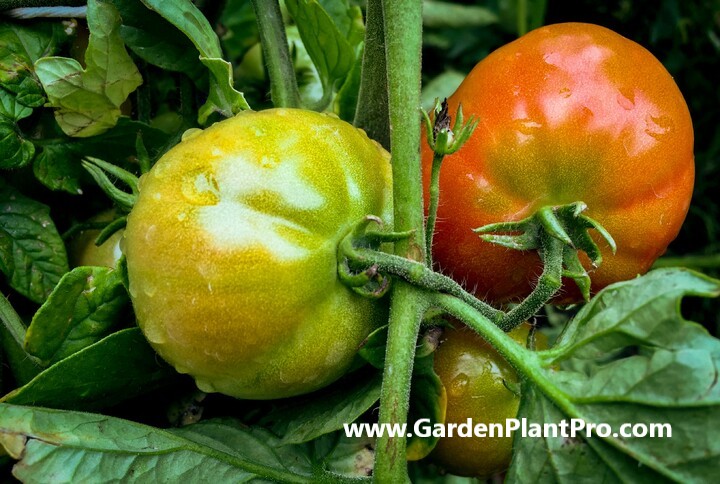
Pruning Your Tomato Plants
Laterals are short branches that emerge from the main stem of a tomato plant at the point where the stem meets a leaf. If let to grow, these sprouts, sometimes known as “suckers,” can develop into entire branches.
While permitting laterals to develop on a tomato plant increases overall foliage, it also reduces the amount and size of fruit. This is because the laterals divert energy and nutrients away from the main stem, which can have a detrimental influence on the fruit’s growth and development.
It is advised that you remove the laterals as they appear to enhance the development and productivity of your tomato plants. This is known as “pruning,” and it entails cutting off the lateral at its base, where it meets the main stem, with a clean, sharp pair of scissors or pruning shears. This will divert the plant’s energy away from the laterals and towards the main stem and fruit.
Pruning the laterals also promotes air circulation around the plant, which can help minimize disease transmission and insect infestations. It also makes the plant easier to maintain and harvest since it minimizes the plant’s overall size and mass.
It is critical to prune the laterals carefully to avoid harming the plant. It is also advised that you do it early in the morning or late in the evening, when the plant is less affected by the heat of the sun. Pruning the laterals with the appropriate technique and time will help assure a healthy and prolific tomato yield.
When & How To Harvest
Once your tomato plants have started to ripen, it’s time to harvest.
Check the vines daily, and cut or gently twist off the fruits while supporting the vine at the same time. For best flavor, harvest tomatoes when they are fully ripe and still warm from the sun. You can also pick them slightly early if needed and let them ripen indoors. If you’re harvesting green tomatoes for later use, be sure to pick them before any frost.
It’s important to handle ripe tomatoes carefully to avoid bruising or breaking them. Use sharp scissors or pruning shears to cut stems, and use both hands to support the fruit when picking it from the vine.
Storing tomatoes is best done on the counter top at room temperature. If you need to store them in the fridge for a few days, you can do so but be sure to place them in a plastic bag first as this will help keep their flavor and texture intact. For longer-term storage, you can freeze or can your tomatoes.
Storing & Preserving
Storing and preserving tomatoes is key for ensuring that you can enjoy the fruits of your labor.
Ripe tomatoes should be stored at room temperature and out of direct sunlight, and used within a few days. Tomatoes lose color, firmness, and flavor over time, so you’ll want to use them as soon as possible. Unripe tomatoes can also be stored in a paper bag alongside a ripe banana or apple, which will produce ethylene gas and help them mature quickly.
One of the simplest methods to store tomatoes for later use is to freeze them. To freeze tomatoes, first wash and dry them before removing the stems and any blemishes or bruises. Cut them into quarters or leave them whole. Place the tomatoes on a baking sheet and freeze until frozen. After frozen, place the tomatoes in a freezer-safe bag or container and freeze for up to six months.
Canning is another common way to preserve tomatoes, particularly for use in sauces and salsas. To begin canning tomatoes, first wash and blanch them to remove the skins. Next, quarter the tomatoes and remove the seeds and liquid. Fill sterilised canning jars with tomato quarters and any spices or other ingredients, then process the jars in a water bath or pressure canner according to the manufacturer’s directions.
Another method for preserving tomatoes is dehydrating, which involves removing the moisture from the fruit to make it shelf-stable. To dehydrate tomatoes, first wash them and slice them into thin rounds. Then, put the tomato slices on a dehydrator tray or a baking sheet and dry them for several hours in a dehydrator or a low-temperature oven, until they are dry and crispy.
Whichever technique you use to store or preserve your tomatoes, the goal is to utilize high-quality, fresh product and to follow to the proper methods and safety measures to guarantee that your tomatoes remain fresh and tasty for as long as possible.
Common Diseases & How To Control Them
Common diseases and pests can be a major problem for tomato plants.
Fortunately, there are many ways to control them and protect your crop.
The most common diseases that affect tomatoes are early blight, late blight, verticillium wilt, and fusarium wilt.
Early blight appears as circular leaf spots with yellow edges and dark centers. It can spread quickly, so it is important to remove any affected leaves or branches as soon as you notice them.
Late blight also appears as circular leaf spots but it is much more serious and can cause the entire plant to die if not treated quickly.
Verticillium wilt causes the leaves of the plant to turn yellow and drop off, while fusarium wilt causes the leaves to turn yellow and curl up before dying.
To prevent these diseases from occurring, it’s important to choose disease-resistant varieties of tomatoes when planting. Additionally, avoid wetting the foliage of the plants when watering and make sure the soil is well-draining.
Keeping the garden clean of debris will also help to reduce the risk of disease. If you do notice any signs of disease, it’s important to act fast. Remove any affected parts of the plant and dispose of them in a sealed bag away from your garden. You can help prevent further spread by spraying a fungicide on the plants every 7-10 days until symptoms disappear completely.
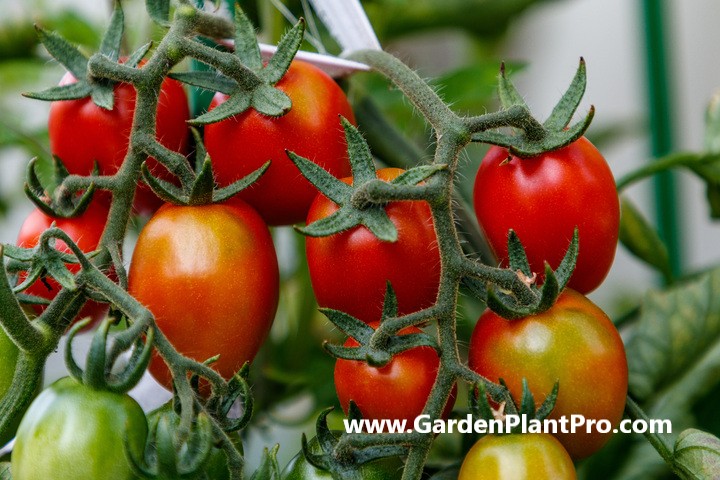
Common Pests & How To Control Them
Common garden pests such as aphids, psyllids, and blossom end rot can wreak havoc on your tomato plants. Knowing how to identify and control these pests is essential for a successful tomato harvest.
Aphids
Aphids are small, soft-bodied insects that feed on the sap of a plant. They can be identified by their pear-shaped bodies, long antennae and legs, and black or grey coloration. To remove aphids from your tomato plants, you can spray them off with a sharp stream of water from the hose. Alternatively, you can hand-squish them or cover the affected area with an insecticidal soap or horticultural oil.
Psyllids
Psyllids are tiny, jumping insects that feed on the leaves of tomato plants. They can be identified by their small size (about 1/8 inch long), yellowish-green coloring, and white spots on their wings. To prevent psyllids from damaging your tomatoes, encourage beneficial insects like spiders and damsel bugs to take up residence in your garden. Additionally, make sure to regularly water your plants to reduce plant stress.
Blossom End Rot
Blossom end rot is a common condition that affects tomatoes and is caused by calcium deficiency in the soil. To prevent blossom end rot from occurring, apply natural garden lime or gypsum before planting and use mulch to retain moisture in the soil.
Beneficial Companion Plants
Companion planting is a technique used to intersperse different types of plants in the vegetable garden to create a more diverse and beneficial environment. When growing tomatoes, there are a number of beneficial companion plants that can be utilized to improve growth, protect from pests and diseases, and provide additional nutrients.
Carrots and onions are two of the most popular companion plants for tomatoes.
Carrots provide the tomato plant with nitrogen, while onions help to repel pests such as aphids, carrot root fly, and other garden pests. Garlic and chives can also be planted alongside tomatoes for similar pest protection benefits.
When it comes to pest protection, marigolds are often used in conjunction with tomatoes. The marigold’s strong smell helps to deter insects from entering the area. Nasturtium, tansy and basil are other companion plants that can help to repel pests.
Legumes such as beans and peas can also be planted near tomatoes to improve soil fertility by providing nitrogen-fixing properties. The roots of legume plants fix nitrogen from the air into the soil, which makes it more fertile and better able to support tomato growth.
Herbs such as oregano, sage, thyme, parsley, rosemary and lavender can also be used as companion plants for tomatoes. These herbs provide additional nutrients and help to attract beneficial insects such as bees which helps pollinate the plants and increase yields.
In order to maximize the benefits of companion planting it is important to ensure that each plant is given enough space so that they do not compete for resources or crowd each other out. Additionally, it is important to choose varieties that are not prone to disease or insect infestation so that they do not spread these problems onto other plants in the garden.
With careful planning and consideration it is possible to create a thriving vegetable garden with a variety of companion plants working together in harmony alongside the tomatoes.
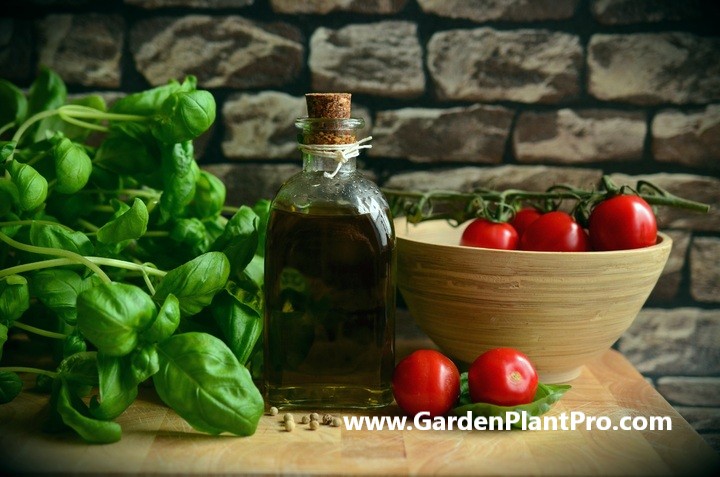
Using Your Home Grown Tomatoes
Just slicing your fresh tomatoes and adding them to salads or sandwiches is one of the easiest and most delicious ways to consume them. A fresh tomato can give a burst of flavour and colour to any dish, and it goes well with anything from crisp lettuce and crunchy cucumbers to salty cheeses and savoury meats.
Tomatoes are also ideal for making homemade pasta sauces, which can be tailored to your preferences and used in a number of recipes. To begin making a basic tomato sauce, sauté garlic and onions in olive oil until aromatic and transparent. Next, season with salt, pepper, and your choice herbs and spices and add chopped tomatoes. Let the sauce to boil for 20-30 minutes, or until it has thickened and the flavours have combined, before serving over your favourite pasta.
If you’re searching for a heartier dish, consider making a robust soup or stew with your garden tomatoes. Tomato soup is a traditional comfort dish that may be cooked with fresh or canned tomatoes and goes well with crusty bread or a grilled cheese sandwich. Try adding pieces of meat or chicken to your tomato sauce, along with potatoes, carrots, and other veggies, for a heartier stew.
If you’re feeling daring, try making your own ketchup or salsa with your fresh tomatoes. Homemade ketchup is surprisingly simple to prepare and can be tailored to your preferences, whilst homemade salsa is ideal for snacking or eating with tacos, burritos, and other Mexican cuisine.
Whatever you do with your homegrown tomatoes, the idea is to enjoy their fresh, juicy flavour and to experiment with new ways to include them into your meals. With a little imagination and basic culinary abilities, you can transform your fresh tomatoes into a variety of tasty and nutritious recipes that your entire family will enjoy.
Homemade Ketchup Recipe
Homemade ketchup is surprisingly easy to make and can be customized to your liking. Here’s a simple recipe to get you started:
Ingredients:
- 2 lbs fresh tomatoes, chopped
- 1 onion, chopped
- 1/2 cup apple cider vinegar
- 1/4 cup brown sugar
- 1 tsp salt
- 1/2 tsp black pepper
- 1/2 tsp ground mustard
- 1/4 tsp cinnamon
- 1/4 tsp cloves
Instructions:
- Combine the chopped tomatoes and onion in a large pot over medium heat. Cook for about 15-20 minutes, until the tomatoes have broken down and the onion is soft and translucent.
- Using an immersion blender or a regular blender, puree the tomato mixture until it is smooth.
- Return the pureed tomato mixture to the pot and add the apple cider vinegar, brown sugar, salt, black pepper, ground mustard, cinnamon, and cloves.
- Stir the mixture to combine and bring it to a simmer over medium heat.
- Reduce the heat to low and let the ketchup simmer for about an hour, stirring occasionally, until it has thickened and the flavors have melded together.
- Let the ketchup cool to room temperature, then transfer it to a blender and blend until it is completely smooth.
- Store the ketchup in an airtight container in the refrigerator for up to a month.
This recipe makes about 2 cups of ketchup, but you can easily double or triple the recipe to make more. Feel free to adjust the seasonings to your liking, adding more or less sugar, spices, or vinegar to suit your taste. Enjoy your homemade ketchup on burgers, hot dogs, fries, or any other dish that calls for this classic condiment.


